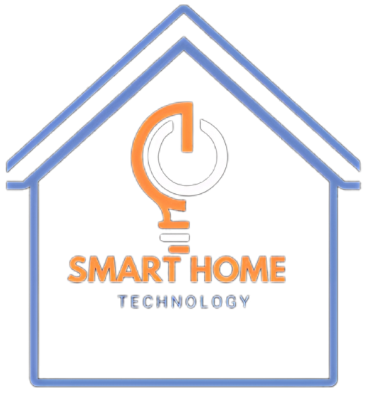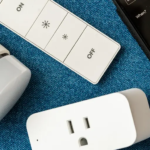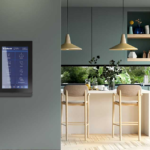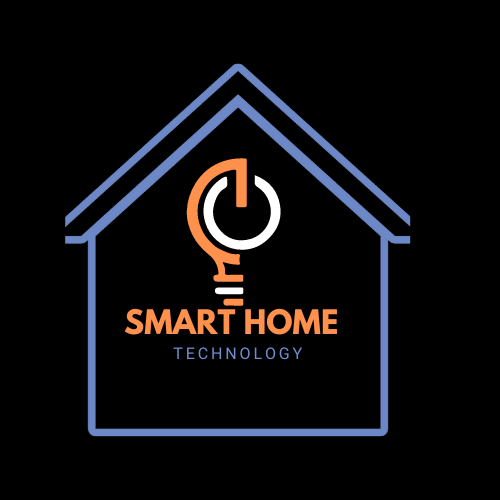
Table of Contents
Smart home technology has changed how we live, making it innovative and offering protecting homes against social vices or intrusion and safeguarding our loved ones from danger. The smart camera provides owners with greater control and peace of mind, and it has cloud-based storage with an AI-driven alarm that can inform the owners of any intrusion.
According to a report by Statista, the global smart home security market is projected to reach over $11 billion by 2026, reflecting growing consumer demand for these innovative solutions. This is like a dream come true for many people, but for a smart camera to be effective in a home, it needs technological applications to promote its activeness. In this guide, you will understand a smart home security camera, its functions and types, the top ten (10) smart home security camera and how to pick the right one for your home.
What is a Smart Home Security Camera?
A smart home security camera is a surveillance device with advanced technology that allows users to monitor their property remotely via smartphones, tablets, or computers. Unlike traditional security cameras, smart variants include motion detection, two-way audio, night vision, and cloud storage. These cameras are often integrated into a larger smart home ecosystem, enabling seamless interaction with other devices such as doorbells, alarms, and smart locks.
The Functions of Smart Home Security Cameras.
Having a Smart Home security camera is not only for the importance of alarming you of intrusion; there are other functions, which are listed below to help you understand its significance:
- High-Definition Video Quality
Modern smart cameras offer HD and even 4K resolution, ensuring crystal-clear images and video recordings. This level of detail is crucial for identifying faces, license plates, or other important information in case of a security breach.
- Motion Detection and Alerts
Smart cameras are equipped with motion sensors that detect unusual activity. When triggered, these sensors send instant alerts to the user’s device, allowing for real-time response to potential threats.
- Two-Way Audio
This feature enables users to communicate with individuals near the camera, such as family members, delivery personnel, or potential intruders. Two-way audio enhances the device’s functionality beyond mere surveillance.
- Night Vision
Many smart cameras equipped with infrared technology can capture clear footage even in low light or complete darkness. This feature is essential for 24/7 security monitoring.
Photograph: Freepik
- Integration with Smart Home Systems
Many smart cameras can be connected to platforms like Amazon Alexa, Google Assistant, or Apple HomeKit, enabling voice control and automation. For instance, a camera can trigger smart lights to turn on when detecting motion.
- Customizable Alerts
You can set a monitoring time; for instance, at your back, you will receive an alert when someone or any activity occurs in that area.
- Live Streaming
The camera can allow multiple users to access the live stream, making it easier for other family members to check in anytime.
- Cloud and Local Storage Options
You can choose between saving footage in the cloud or using local storage devices like SD cards. Saving footage on the cloud guarantees easy access.
- AI-Powered Features
Modern home security cameras use artificial intelligence (AI) to detect and differentiate between humans, animals, and things.
- Geo – fencing
Any camera with geo-fencing can be activated or deactivated based on your location and can be automatically turned on when you are at home.
Benefits of Smart Home Security Cameras

There are a lot of benefits of a Smart home security camera, but I have listed the important ones you will need to know and understand that will help you:
- Intensify Security: Smart cameras deter potential intruders and provide evidence in case of incidents. The ability to monitor live feeds and receive alerts ensures proactive security measures.
- Convenience and Remote Monitoring: With mobile app integration, users can check on their homes anywhere. This feature is especially beneficial for frequent travelers or parents wanting to keep an eye on their children.
- Peace of Mind: Knowing that one’s home is protected round the clock offers unparalleled peace of mind. Smart cameras provide reassurance that loved ones and valuables are safe.
- Cost-Effective Security: Smart cameras are a one-time investment with long-term benefits compared to hiring professional security services. Some models are even DIY-friendly, eliminating installation costs.
- Deterrence of Criminal Activity: it is a strong obstacle for burglars, intruders, and robbers. Knowing that they can be recorded and kept as evidence for the police would allow them to reduce their likelihood of criminal activity.
- Night Vision Capability: Most vices happen at night, so Smart home cameras are equipped with advanced or infrared night vision that shows clear vision at night.
- Cloud Storage for Footage: It is important to keep data safe, and this secures footage properly for good use as evidence in case of theft or disputes.
- Evidence Collection for Investigations: Convictors won’t be able to run away from their crimes, which serves as valuable evidence for law enforcement and insurance claims.
- Personalized Security: You can easily set security measures based on your needs and home designs.
- Child and Pet Monitoring: It will keep a close eye on your kids or pets while you are away, and you can always watch them through it to ensure their safety and well-being.
Factors to Consider When Choosing a Smart Camera.
Knowing the right requirements when selecting a smart home security camera will help with your user interface.
Here are some key factors you should consider when choosing a Smart security camera that suits your ideal smart home:
- Installation Requirements: Determine whether the camera requires professional installation or if it’s a DIY-friendly model. Wireless cameras are easier to set up but may have limitations in terms of placement.
- Connectivity: Consider whether the camera relies on Wi-Fi, Bluetooth, or cellular networks. Ensure your home’s internet bandwidth can support the device, especially if using multiple cameras.
Photograph: Freepik
- Subscription Costs: Some cameras require monthly subscriptions for cloud storage or advanced features. Evaluate these ongoing costs before making a purchase.
- Privacy and Data Security: Choose a camera from a reputable brand that prioritizes user data protection. Look for features like end-to-end encryption and multi-factor authentication.
- Power Source: Decide between battery-powered or wired cameras. Battery-powered options offer flexibility but require regular charging, while wired cameras provide continuous operation but need access to power outlets.
- Application Usability: Select a camera that has user – friendly applications that you can easily access to record live feeds or settings.
- Privacy and Security: Always check for features like data encryption in the smart security camera you are about to purchase. This will protect your smart home devices from getting hacked.
- Check Budget: Cut your coat according to your size. Compare the prices and subscription costs for cloud storage so they don’t affect you when renewing your payment.
- Brand Reputation: Choose a trusted brand with national recognition. Look for positive reviews and reliable customer support.
- Installation Process: Always know if it is something you can install by yourself while checking the manual or if you need the help of a professional to install it for you.
Top Smart Home Security Camera

There are different types of security cameras that you can use for your smart home. Here are a few examples of smart home security cameras you can use for your smart homes:
- Arlo Pro 4: Known for its superior video quality, weather resistance, and compatibility with multiple smart home platforms, the Arlo Pro 4 is a top choice for outdoor monitoring.
2. Ring Stick Up Cam: This versatile camera can be used indoors or outdoors and offers a wide field of view, motion detection, and integration with the Ring ecosystem.
3. Google Nest Cam (Battery): The Nest Cam’s standout features include facial recognition, intelligent alerts, and seamless integration with Google Home devices.
4. Wyze Cam v3: For budget-conscious consumers, the Wyze Cam v3 delivers excellent performance with features like color night vision and free cloud storage for 14 days.
5. Google Nest Cam (Battery): This offers 1080p HDR video and clear visuals day or night. This security camera alarms and can differentiate humans from animals and things like vehicles. It is wireless and can be placed either indoors or outdoors.
6. Blink Outdoor: This wireless camera offers 1080HD video with infrared night vision. It is popular for being weather-resistant and is very expensive with minimal upkeep.
7. Eufy Security SoloCam S40: This is a 2k resolution with in-built solar panels and motions powered and detected by AI. The Solar allows it to eliminate frequent battery replacement, making it very convenient.
8. Reolink Argus 3 Pro: This 2K video resolution solar charging is built for color night vision. It is also very flexible in power options.
9. SimpliSafe SimpliCam: Its output is a 1080p HD video with intelligent motion detection and different professional monitoring options.
10. Zmodo EZCam: A budget-friendly option with HD video quality, night vision, and a 2-way audio system.
How To Set Your Smart Security Cameras Correctly.
We have discussed the benefits, functions, how to select the right smart security camera, and types of smart security for your home, but all these can easily execute their task if they are well positioned. Here are tips on how to set your Smart Security Cameras properly:
- Plan the Coverage Area: First, identify open areas that are frequently used, such as the entry, living spaces, and garages. Then, make sure your camera covers these spots properly.
- Choose the Right Camera: Select the right camera for the right places—use an outdoor camera for an exposed area and do the same for protected spaces by using indoor cameras. Also, ensure that doorbell cameras are used to monitor your front door.
- Position Cameras Properly: This is very important; install your cameras at a height of 7- 9 feet and put them at an angle that minimizes blind spots while trying to avoid direct light sources like the sun to prevent a glare.
- Ensure Strong Connectivity: Let the network be stable by putting it within your WI-Fi range to perform smooth streaming or alerts.
- Secure Power Supply: Wired cameras must be placed near power outlets to be recharged effectively and perform well.
- Test and Adjust Settings: Fine-tune motion detection zones and sensitivity levels to avoid false alarms while capturing relevant activity.
- Integrate with Smart Devices: Sync cameras with smart home systems, like lights and alarms, for improved security automation.
- Maintain Your System: Clean lenses, check connections, and regularly test functionality to ensure your security system is effective.
- Prioritize Privacy: Enable encryption and secure passwords to protect your system from hacking. Use physical shutters for indoor cameras when not in use.
- Use Multiple Cameras Strategically: Combine multiple cameras to cover your entire property, ensuring overlapping fields of view to eliminate blind spots.
- Consider Professional Monitoring Services: Pair your smart cameras with professional monitoring to ensure 24/7 surveillance and faster emergency response times.
- Plan for Power Outages: Include backup options like battery packs or solar-powered cameras to ensure your security system remains functional during power outages.
Conclusion
The major importance of a smart home security camera is for safety and documentation of what you can’t see if you are not at the place. Smart home security cameras are valuable to modern homes, offering unparalleled convenience, safety, and peace of mind. You can select the right camera to suit their needs and budget by understanding their features, benefits, and considerations. As technology grows, these devices will become more sophisticated, ensuring our homes remain secure in an ever-changing world. Smart cameras are also one of the big parts of a Smart home.
Frequently Asked Questions
1. What should I look for in a smart home security camera?
Key features include high-resolution video (1080p or 4K), night vision, motion detection, two-way audio, and app compatibility.
2. Are wired or wireless security cameras better?
Wireless cameras offer flexibility and easy installation, while wired cameras provide consistent power and reliability for long-term use.
3. Do smart security cameras require a subscription?
Some cameras, like Arlo and Ring, offer advanced features like cloud storage and AI detection through subscriptions, but basic features are often free.
4. Which smart home platforms are compatible with security cameras?
Amazon Alexa, Google Home, and Apple HomeKit are among the most popular platforms, and they all integrate seamlessly with compatible cameras.
5.Are there affordable smart security cameras?
Yes, cameras like Wyze Cam and Blink provide economical choices with critical functionality that are ideal for budget-conscious shoppers.



